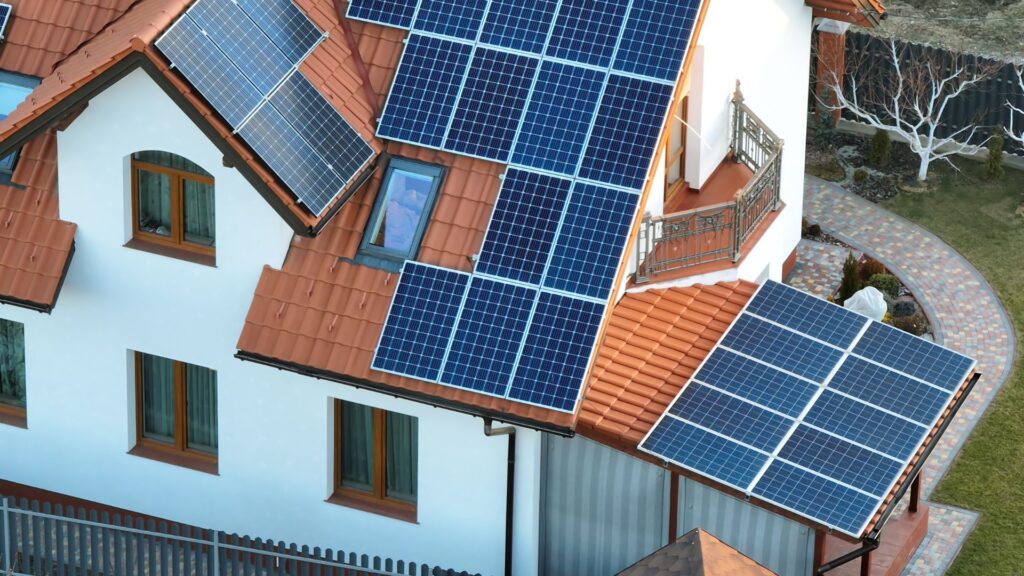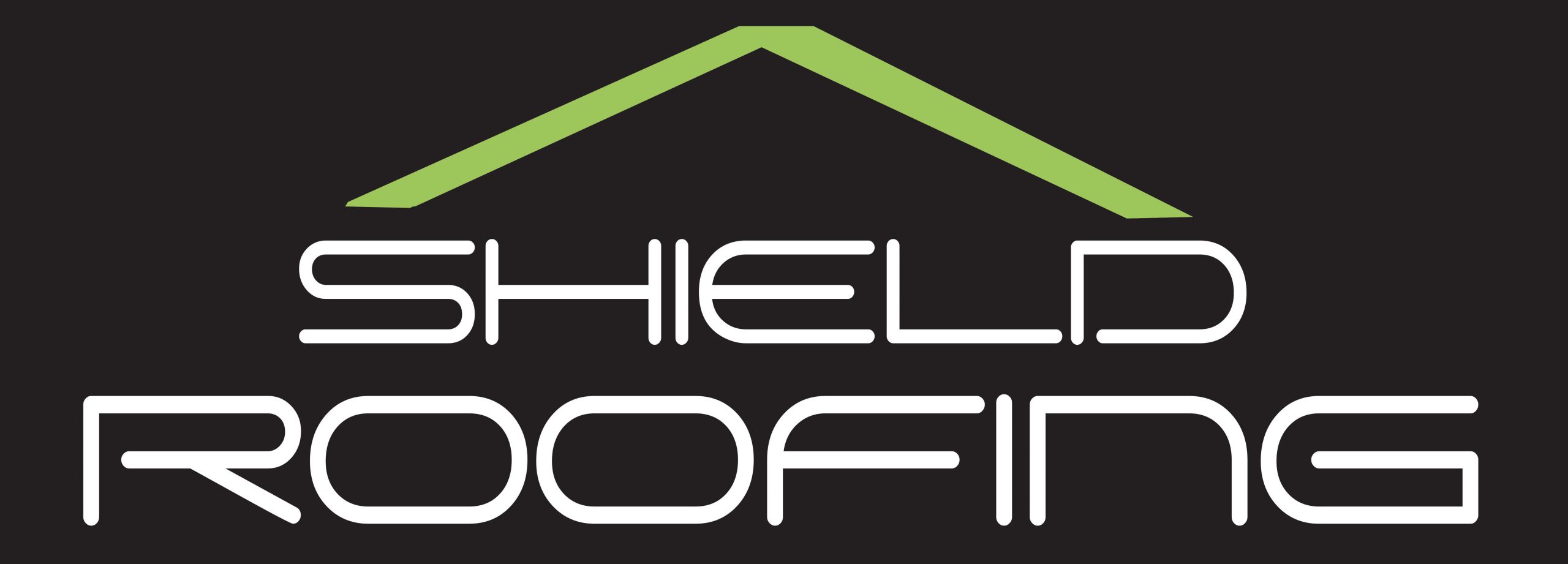As the world becomes increasingly aware of the need for sustainable living practices, homeowners are looking for ways to reduce their carbon footprint and lower their energy bills. Solar roofing has emerged as a leading solution, offering a way to harness the sun’s power to generate electricity directly from the roof of one’s home. This blog post, brought to you by Shield Roofing, explores the various solar roofing options available to homeowners, diving into the benefits, installation considerations, and financial aspects of making the switch to solar.
The Basics of Solar Roofing

Solar roofing transforms sunlight into electricity, providing a renewable energy source that can power your home. The technology primarily comes in two forms: solar panels and solar shingles or tiles. Solar panels are the more traditional option, mounted on top of the existing roof structure, while solar shingles and tiles integrate into the roofing material itself, offering a more aesthetic solution that blends seamlessly with the design of your home. Both options have the potential to significantly reduce reliance on grid-supplied electricity, but they do so in visually and technologically distinct ways.
Understanding how solar roofing works is key to appreciating its benefits. Solar cells within the panels or shingles convert sunlight into direct current (DC) electricity. An inverter then converts this DC electricity into alternating current (AC), which can be used to power home appliances. The efficiency of this process and the amount of electricity generated depend on several factors, including the orientation, angle, and shading of the roof, as well as the specific technology used in the solar roofing materials.
Types of Solar Roofing Options
Solar panels are a familiar sight on many homes and remain a popular choice due to their proven efficiency and cost-effectiveness. They are typically easier to install on existing roofs without the need for a complete overhaul. However, the aesthetic impact of traditional solar panels has prompted some homeowners to seek out less conspicuous alternatives.
Enter solar shingles and tiles, which offer a more integrated approach to solar roofing. These innovative materials resemble traditional roofing tiles but are equipped with photovoltaic cells to generate electricity. While solar shingles and tiles can be more expensive and less efficient than standard solar panels, their aesthetic appeal and ability to blend with the home’s architecture make them an attractive option for many. Comparing the two, homeowners must weigh their priorities between maximum efficiency and aesthetic integration.
Benefits of Solar Roofing
The adoption of solar roofing brings a host of benefits, not least of which is the potential for significant energy savings. By generating your electricity, you can reduce your reliance on the grid and lower your energy bills, sometimes dramatically. Moreover, solar roofing contributes to a healthier environment by producing clean, renewable energy, reducing your home’s carbon footprint.
In addition to environmental and financial savings, installing solar roofing can increase your property’s value. As energy efficiency becomes a more prominent concern for homebuyers, properties equipped with solar roofing systems are likely to be more attractive on the market. Furthermore, many governments offer incentives and rebates for solar installations, making the initial investment more affordable and accelerating the financial returns.
Installation Considerations
Not all roofs are suitable for solar installation. The roof’s orientation, angle, and the amount of shading it receives can all impact the efficiency of a solar roofing system. Homeowners should consult with a professional, such as Shield Roofing, to assess their roof’s viability for solar. Choosing the right provider is crucial; look for experienced, certified installers who can offer a comprehensive warranty on both materials and workmanship.
Navigating permitting and regulations is another essential step in the installation process. Your solar roofing provider can often assist with this, ensuring that all local building codes are met and any necessary permits are obtained before installation begins. This preparation helps avoid delays and ensures that the installation proceeds smoothly.
Financial Aspects of Solar Roofing
While the initial investment in solar roofing can be significant, the long-term savings on energy bills can be substantial. Homeowners should consider both the upfront cost and the potential for future savings when evaluating solar roofing. Financing options, including loans, leases, and power purchase agreements, can make solar more accessible by spreading the cost over time.
The return on investment (ROI) for solar roofing is influenced by several factors, including the system’s efficiency, the cost of electricity in your area, and the availability of government incentives. Many homeowners find that their solar roofing system pays for itself within a few years, after which they enjoy reduced energy costs for the lifespan of the system.
Maintenance and Longevity
Solar roofing systems require relatively little maintenance, typically needing only occasional cleaning to remove dirt and debris that could block sunlight. However, it’s important to monitor the system’s performance and address any issues promptly to maintain optimal efficiency. Most solar roofing materials are designed to be durable, with warranties often covering 20 to 25 years or more, ensuring that homeowners can enjoy the benefits of solar energy for decades to come.
When considering solar roofing, homeowners should prioritize choosing a system that offers both reliability and a strong warranty. Providers like Shield Roofing can offer expert advice on selecting and
maintaining a solar roofing system that meets your needs, ensuring durability and efficiency over the long term. Proper installation by certified professionals is key to maximizing the lifespan and effectiveness of your solar roof, making the selection of a trusted contractor an essential part of the process.
Solar roofing presents an exciting opportunity for homeowners to enhance the sustainability and efficiency of their homes. Whether opting for traditional solar panels or innovative solar shingles, the benefits of solar roofing are clear: energy savings, environmental impact reduction, and increased property value. Understanding the different types of solar roofing options, along with the considerations for installation and financial aspects, empowers homeowners to make informed decisions that align with their goals and the needs of their homes.As the interest in renewable energy continues to grow, solar roofing stands out as a viable and beneficial choice for homeowners looking to invest in the future of their property. By partnering with experienced professionals like Shield Roofing, homeowners can navigate the process of selecting, installing, and maintaining a solar roofing system with confidence, ensuring that their investment delivers both immediate and long-term returns. If you’re considering solar roofing for your home, now is the time to take the next step. Contact Shield Roofing to explore your solar roofing options and learn more about how we can help you achieve a more sustainable, energy-efficient home. Our team of experts is ready to guide you through every stage of the process, from assessing your roof’s suitability for solar to choosing the right system and ensuring a smooth installation. Let us help you harness the power of the sun and enjoy the many benefits of solar roofing.

